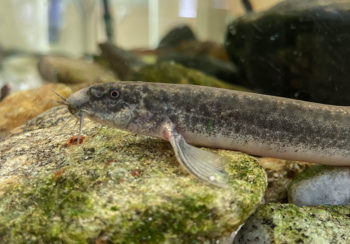Signals from the portable electronic devices that have proliferated in our lives are crowding the limited number of radio frequencies that enable wireless communication. Now a UGA researcher is looking to use lightwaves to squeeze more out of the radio frequency spectrum.
Mable Fok, an assistant professor of engineering who also leads the university’s Lightwave and Microwave Photonics Research Laboratory, received a National Science Foundation CAREER Award to study how to use photonics, the science and application of light, to harness unused slivers of the spectrum.
Inspired by the glass knifefish, small freshwater electric fish sometimes kept as pets, Fok’s research will create a device to escape from the jamming frequency the same way the fish do. The fish use what’s known as a jamming avoidance response, or JAR, to prevent their electromagnetic signals from interfering with those of other knifefish around them.
Fok will use photonics technologies to rapidly scan the spectrum and find available frequencies. Once identified, those gaps can be used by various radio frequency devices. Fok’s scheme not only allows the device to talk and listen at the same time using the same frequency, but it also enables the device to be “smart” enough to run away from interference and jamming. “If someone tries to jam our signal, we’ll be able to just move someplace else that no one is using.”
“Fundamentally, this spectrum is all we have,” Fok said. “We cannot create more space” in the spectrum, “but we can make better use of what we have.”






